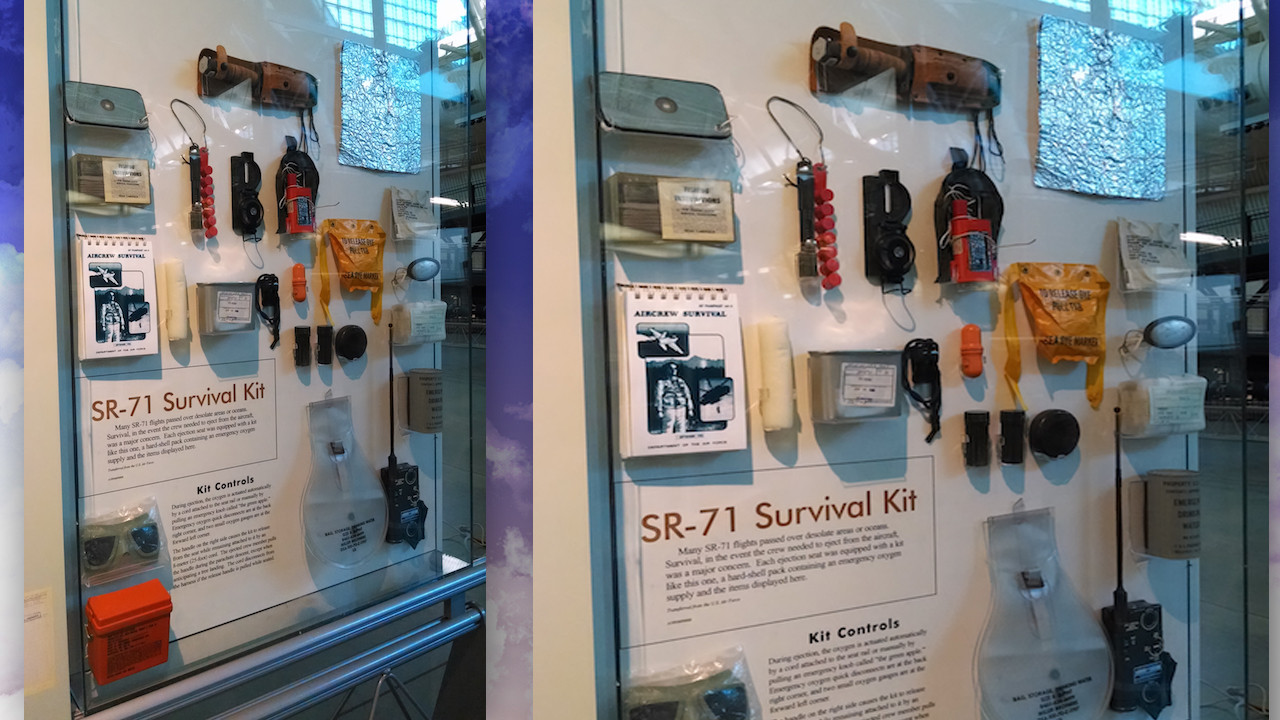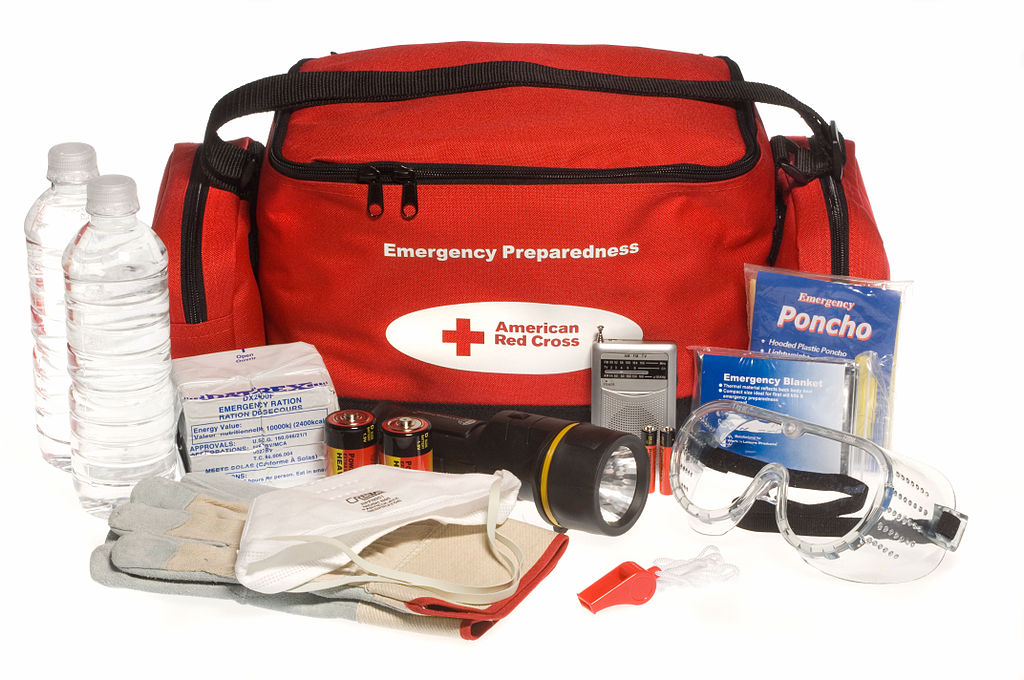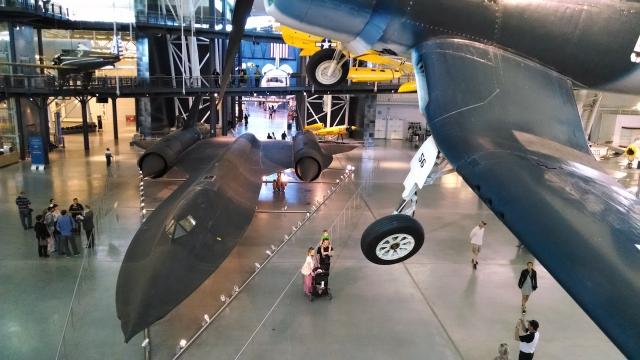The SR-71 Blackbird is one of history’s most celebrated spy planes, and for good reason. When Blackbird pilots took off, they had to be ready to eject and land in harsh, desolate environments. Here’s some detail on what they packed in their emergency kits, and what you should include in yours.
I recently visited the Smithsonian National Air and Space Museum’s Steven F. Udvar-Hazy Center in Washington DC. Front and centre as soon as you walk in is a record-setting SR-71 Blackbird, parked right in the middle of the hangar floor for you to admire. Also just off to the side of the Blackbird is the display below, of some of the items that Blackbird pilots carried in their emergency kits to survive if they had to eject.

Here are a few things in that kit, and some analogues you might consider packing into your own emergency kit.
- An emergency water supply (canned), and a resealable drinking water storage bladder: You can use sealed, distilled water from the suopermarket. You can also use emergency water containers and fill from your own supply, as long as you treat it. The benefit of water in cans or packs is that it’s been sanitised and won’t need to be treated or replaced frequently. Store plenty of water and a bottle to reuse. You may also want water purification tablets or a portable filter to purify questionable water sources if you can’t boil or distil on the go.
- A full first-aid kit, complete with bandages, gauze, shears and other elements. : The Red Cross has guidelines on what makes a good first aid kit, whether you build one yourself or go out and buy one off the shelf. Make sure you include multiple sizes of adhesive and roll bandages, absorbent compresses, antiseptic wipes, antibiotic ointment, a cold compress, non-latex gloves, scissors and thread. If you have any prescription medications, include those too. Make sure to check the kit regularly and replace items that may have expired.
- Day and night flares: A good automobile emergency kit will include flares, but there’s good reason to have them in your general kit as well.
- A thermal blanket: Simple mylar thermal blankets will do the trick here. I like to keep several in my car, and they fold up small enough to fit into a pocket. If you’re packing a vehicle kit, consider a heavier blanket in the boot as well.
- A hunting knife: A good knife is an essential tool in just about every situation.. It’s a prying tool, a cutting tool, and a weapon in one. This guide from our friends at The Art of Manliness will help you pick the perfect survival knife.
- Protective goggles: You may or may not need protective goggles depending on your climate; Blackbird pilots carried them to protect their eyes and face from exposure. This one’s up to you, but you can find decent goggles at your local camping or surplus store.
- Local maps: Getting around is harder with no GPS, and it can be even worse if you need to travel significant distances on foot. Keep some local paper maps in your emergency kit in case you have to go analogue and still find your way around.
These are just a few of items that Blackbird pilots carried in their onboard emergency kits. The kit also included an inflatable life raft, a portable oxygen supply, and a few other goodies that pilots would need to descend safely from extreme altitudes. We imagine there were a few other things in the real kits not included in the museum displays as well.

This shouldn’t be the end of your kit, though. You should aim for portability, but you should also consider some other useful items that a spy plane pilot may not have been able to carry:
- An LED flashlight and spare batteries
- An extra set or two of clothing — especially outerwear
- Some denomination of cash (small bills are fine, you just want to be able to make purchases if power is out or credit card systems are unavailable)
- Important personal documents (passports, birth certificates, any proof of identity)
- Any other portable personal items (Hygiene items, personal effects, anything that will make an emergency less stressful)
Blackbird pilots may not have had the benefit of loading up the trunk of a vehicle with emergency gear, or carrying a duffel bag packed with everything you’d need to survive for 72+ hours, but you probably do. Take a little time to plan, and in the best case, you’ll be grateful you never need the stuff. If you do however, you’ll be glad you have it.

Comments
2 responses to “How To Pack An Emergency Kit Like A Spy Plane Pilot”
iPhone